




Why Are Valleys Important in Our Environment?
Have you ever seen a valley? How beautiful and mesmerizing beauty a valley has! You must have seen the beautiful valley and the beauty of nature when you visit a hill station with your family or friends on summer vacation or any other holiday. You’ll gather a little more information about a valley in this article.
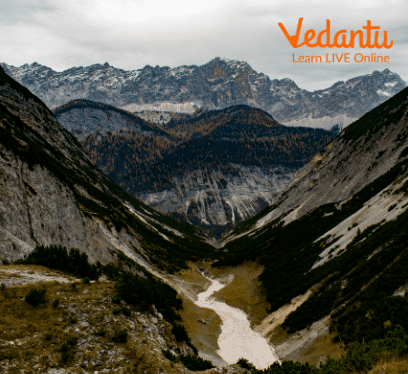
Valley’s Image
In a sandbox or a dirt mound, try this experiment. Make a tall sand or mud mound. Pour a small amount of water on top of the mound now. Allow it to drain before adding more water. Repeat the procedure as necessary.
Take a look at what's going on now. Most likely, the water is draining in a single location. The water has swept away the sand or dirt in that location, forming a v-shaped valley. This is also one of the ways valleys originate on the Earth.
What is a Valley?
A valley is a long depression on the Earth's face, analogous to a gutter. It's constantly set up between mountain ranges or hill ranges. Rivers erode or wear down soil and jewels, performing in vale conformation. Thousands or millions of times rivers pass during this procedure.
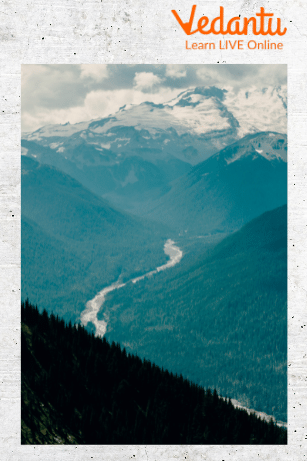
Valley
A valley is a long, low plain that runs between hills or mountains and generally has a swash or sluice running through it from one end to the other. The maturity of denes is formed by gutters or aqueducts eroding the land face over a long period of time.
Types of Valleys
When considering valley types, it's vital to remember that some are V-shaped (also known as river valleys) or U-shaped, while others are flat or hanging. Each valley type has its own set of processes that lead to its formation, regardless of its shape.
V-shaped valley
U-shaped valley
Flat-floored valley
Examples of Valleys
One famous example of a valley is the Grand Canyon which is located in the southeastern United States. The Grand Canyon is a V-shaped valley formed by the Colorado River.
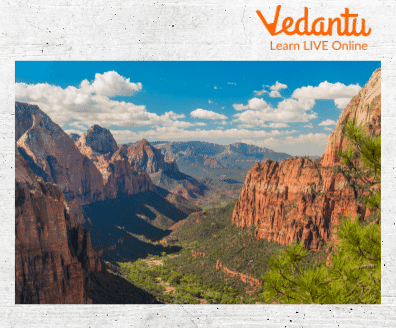
Grand Canyon Valley
Another example of a valley is Yosemite Valley in California. This valley represents a U-shaped valley which is located in the Sierra Nevada Mountains.
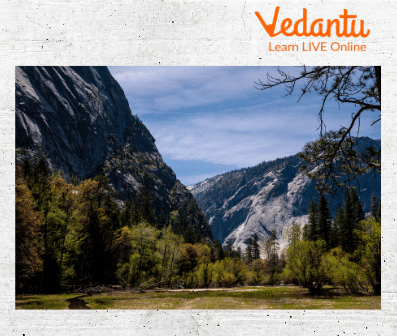
Yosemite Valley
How Valleys (denes) are Formed?
Valleys may arise through several different processes. Most generally arise from corrosion over long ages of time by moving water and are known as swash valleys. These geological formations are carved by sliding glaciers and flowing gutters.
Valleys are low-lying areas of land that have been wiped and reduced by gravity, water, and ice. Some are concave, while others suspend. They are in the shape of a "U" or a"V" or a “flat”.
Importance of Valleys
Valleys are important because
They help build a civilization and increase the area of people.
People get water, rich soils, fish and good water life.
Rich soils help to grow good quality crops in and around the region of valleys.
Rivers give a generous force of water for major agreements.
It helps to survive better by using essential things.
Facts About Valleys
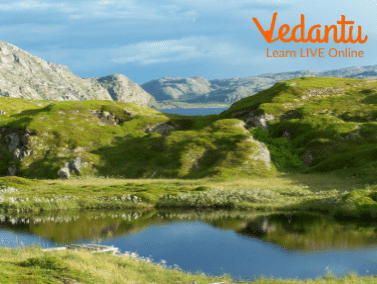
Facts About Valley
The faster the water runs, the steeper the mountain. The deeper the valley formed by the water, the faster it runs. Some valleys are canyons with steep sides.
Glaciers, which are massive ice sheets, create even bigger valleys. They make their way down a mountain gently, generally following a river valley. They make the valley into a U-shape rather than a V-shape.
A river or a glacier doesn't always form a valley. When two plates collide but do not entirely touch, a valley occurs.
Winds and storms are frequently kept at bay in valleys.
Summary
A valley is a long depression on the Earth's surface, similar to a ditch. It is frequently found between mountain ranges or hill ranges. Valleys, which are normally inhabited by a river, can also slope down to an exit, which could be another river, a lake, or the ocean. There are three common valleys: V-shaped valleys, U-shaped valleys, and flat-floored valleys. Examples of the valley are the Grand Canyon, which is located in the south-eastern United States and Yosemite Valley in California.
FAQs on Understanding Valleys: Types, Importance & Examples
1. What makes a valley significant?
Valleys have played a significant role in human evolution since the beginning because of their proximity to rivers. Rivers offered resources like water, healthy soils, and food like fish, as well as making mobility easier.
2. When is the Valley of Flowers at its most beautiful?
The Valley of Flowers in Uttarakhand is only accessible from June through October, but between mid-July and mid-August, when it is in full bloom, is the best time to visit.
3. What is the name of the valley between the two mountains?
A valley is a lengthy land depression that typically lies between two hills and has a river in it. Every valley is a vale. If you've ever visited a location with mountains, you've probably seen a lot of mountain ranges, mountain summits, and valleys.









